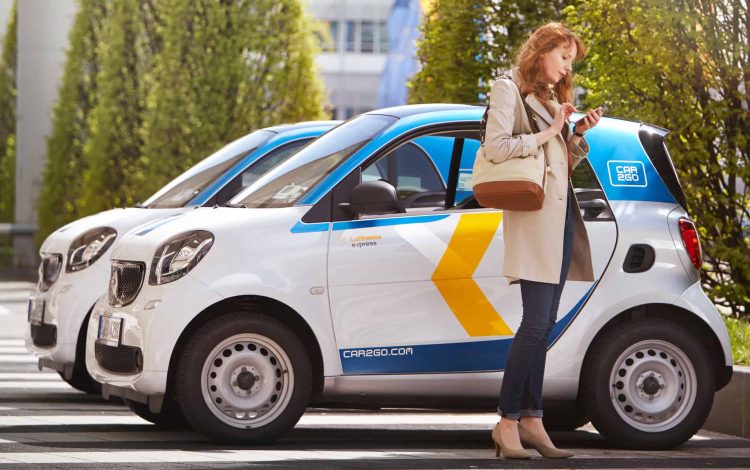Introduction: A New Era in Transportation
The world is on the cusp of a revolution in the way we think about and experience mobility. Electric vehicles (EVs) and ride-sharing services are set to become the cornerstone of future transportation systems. With climate change, urban congestion, and technological advancements driving this shift, the adoption of EVs and shared mobility services is gaining momentum globally. These innovations are not only transforming individual transportation but also reshaping urban infrastructure, economic systems, and the environmental impact of our mobility choices.
This article explores why electric vehicles and ride-sharing services are positioned to dominate the future of mobility, the benefits and challenges of their widespread adoption, and how they will collectively contribute to a more sustainable, efficient, and equitable transportation system.
1. The Rise of Electric Vehicles (EVs)
1.1 What are Electric Vehicles?
An electric vehicle (EV) is any vehicle that is powered by one or more electric motors, using electrical energy stored in batteries. Unlike traditional internal combustion engine (ICE) vehicles, which rely on gasoline or diesel, EVs are powered entirely by electricity. This key difference makes them a cleaner, more sustainable option for personal and public transport.
1.2 The Evolution of Electric Vehicles
The journey of EVs from niche innovations to mainstream technologies has been rapid:
- Early Development: The first electric vehicles were developed in the 19th century. However, gasoline engines soon took over due to the limitations of battery technology.
- Modern Resurgence: In the 21st century, Tesla and other companies made significant strides in battery technology, range, and infrastructure, paving the way for the current generation of EVs.
- Global Adoption: Governments worldwide have begun to adopt policies and incentives to accelerate the adoption of electric vehicles, including subsidies, tax breaks, and investments in charging infrastructure.
1.3 Technological Advancements in EVs
- Battery Technology: Advances in lithium-ion batteries have significantly increased the range of EVs, making them competitive with gasoline-powered cars. Emerging technologies like solid-state batteries hold the potential to revolutionize EV range and charging times even further.
- Charging Infrastructure: The growth of fast-charging stations and wireless charging networks is improving convenience for EV owners. Innovations in charging technology are addressing one of the biggest concerns for EV adoption: long refueling times.
- Autonomous Capabilities: Many EV manufacturers are incorporating autonomous driving technology into their vehicles, which could redefine the way people travel and the efficiency of transportation systems in the near future.
2. The Emergence and Growth of Ride-Sharing Services
2.1 What Are Ride-Sharing Services?
Ride-sharing services, often powered by mobile apps, allow individuals to share a ride with others, typically in a peer-to-peer manner. Rather than owning a personal vehicle, users can request rides on-demand through platforms like Uber, Lyft, or Didi Chuxing.
2.2 The Rise of Ride-Sharing and its Benefits
- Cost Efficiency: Ride-sharing reduces the cost of personal transportation by allowing individuals to share a ride, leading to lower per-trip costs.
- Convenience: Apps enable users to book rides at any time, track their driver, and even select their preferred vehicle type.
- Environmental Impact: By reducing the number of privately owned vehicles on the road, ride-sharing services can lower traffic congestion and reduce carbon emissions.
- Urban Mobility: In cities with high-density populations, ride-sharing services can provide a more efficient alternative to traditional public transportation and the hassle of parking.
2.3 Integration with Electric Vehicles
The convergence of ride-sharing services and electric vehicles is an emerging trend that promises to transform urban transportation. Many ride-sharing companies, including Uber and Lyft, have begun to transition their fleets toward electric vehicles, driven by both environmental goals and the desire to reduce operating costs.
- Sustainability: EVs reduce the carbon footprint of each ride, making ride-sharing services even more attractive for eco-conscious consumers.
- Cost-Effectiveness: EVs are cheaper to maintain and operate than traditional vehicles due to lower fuel costs and fewer moving parts.
- Battery Storage: In the future, vehicle-to-grid (V2G) technology could allow EVs in ride-sharing fleets to store energy and feed it back into the grid, helping stabilize local energy systems.

3. The Benefits of Electric Vehicles and Ride-Sharing Services for Future Mobility
3.1 Environmental Impact
The transition to electric vehicles and shared mobility offers tangible environmental benefits:
- Reduction in Greenhouse Gas Emissions: EVs produce zero tailpipe emissions, significantly reducing air pollution, especially in urban centers.
- Energy Efficiency: EVs are more energy-efficient than traditional gasoline-powered vehicles. For example, electric motors convert up to 90% of energy into movement, compared to just 20-30% for gasoline engines.
- Shared Mobility and Reduced Car Ownership: Ride-sharing services reduce the need for individuals to own private vehicles, which in turn lowers overall emissions and decreases traffic congestion.
3.2 Economic Benefits
- Cost Savings for Consumers: Electric vehicles are cheaper to operate than gasoline-powered vehicles, with savings in fuel, maintenance, and taxes. Ride-sharing services also allow users to avoid the significant costs associated with car ownership, including insurance, maintenance, and parking.
- Creation of New Jobs: The growth of electric vehicle manufacturing, charging infrastructure, and ride-sharing services is contributing to job creation in various sectors, from automotive engineering to app development.
- Improved Urban Planning: As cities increasingly adopt smart mobility solutions, including electric vehicles and ride-sharing services, we could see a shift in urban infrastructure to prioritize green spaces, public transportation, and walkability, reducing reliance on private cars.
3.3 Enhancing Accessibility and Equity
Both electric vehicles and ride-sharing services have the potential to enhance mobility accessibility:
- Shared Mobility: Ride-sharing makes transportation more accessible, especially in underserved areas where public transportation is limited or non-existent.
- Affordable EVs: With the expansion of the electric vehicle market, the cost of EVs is expected to fall, making them more accessible to a broader range of consumers.
- On-Demand Services: Ride-sharing platforms offer flexible transportation options for people who may not be able to own or maintain a vehicle due to financial or physical constraints.
4. The Challenges and Barriers to Widespread Adoption
While the benefits of electric vehicles and ride-sharing services are clear, there are several challenges that need to be addressed for these technologies to become the mainstream mode of transportation.
4.1 Infrastructure Development
- EV Charging Infrastructure: One of the key barriers to EV adoption is the availability of charging stations. Expanding the charging network is critical to ensuring EV owners have the convenience of quick, accessible charging.
- Ride-Sharing Regulations: The growth of ride-sharing services has led to regulatory challenges in many cities. Governments need to develop clear regulations that balance the interests of traditional taxi services, ride-sharing companies, and consumers.
4.2 Consumer Adoption and Cost
- Upfront Costs of EVs: Although the operational costs of electric vehicles are lower, the upfront cost remains a barrier for many consumers. As battery technology improves and economies of scale are achieved, EV prices are expected to decrease, making them more affordable.
- Ride-Sharing Market Saturation: In some cities, ride-sharing services face market saturation, making it challenging for new entrants to gain traction. Additionally, the profitability of ride-sharing companies may be impacted by regulatory constraints or the need to maintain competitive pricing.
4.3 Technological and Operational Issues
- Battery Life and Range: While EVs have come a long way in terms of range, some consumers are still concerned about the range anxiety—the fear of running out of battery power during long trips. Continued improvements in battery technology and more widespread charging networks will help address these concerns.
- Safety and Maintenance: As ride-sharing services scale, the need for maintaining vehicle safety standards and ensuring the quality of service becomes critical. EV ride-sharing fleets must ensure that their vehicles are well-maintained, safe, and reliable.
5. The Future of Electric Vehicles and Ride-Sharing Services
The future of mobility will undoubtedly be shaped by the continued evolution of both electric vehicles and ride-sharing services. As these technologies mature, they will become even more integrated within urban transport ecosystems, driven by the need for sustainable solutions, technological advancements, and consumer demand.
5.1 Autonomous EVs and Ride-Sharing
The convergence of autonomous driving technology with electric vehicles and ride-sharing services has the potential to revolutionize urban mobility. Autonomous electric vehicles (AEVs) could provide driverless rides for passengers, reducing the cost of ride-sharing services, increasing safety, and improving traffic flow. In the long term, the widespread deployment of autonomous EV fleets could make transportation more efficient, affordable, and sustainable.
5.2 Mobility as a Service (MaaS)
The concept of Mobility as a Service (MaaS) envisions a seamless integration of various transportation modes—EVs, ride-sharing, public transport, bikes, and more—into a single platform. This would allow consumers to plan and pay for their trips using a single app, making urban transportation more flexible and user-friendly.
Conclusion: The Future is Electric and Shared
The transition to electric vehicles and ride-sharing services represents a fundamental shift in the way we think about transportation. As urban populations grow, environmental concerns mount, and technological innovation accelerates, the electric vehicle and ride-sharing model will undoubtedly become the mainstream way to move people and goods.
For cities, businesses, and consumers alike, embracing these technologies presents an opportunity to create a more sustainable, equitable, and efficient transportation system. With continued innovation, policy support, and infrastructure development, the future of mobility is bright—and it is powered by electricity and shared mobility.












































